4 REGIONS OF GUATEMALA
Guatemala City & Antigua – Mayan Highlands – Big Maya Sites – Natural Treasures in the center & east


Guatemala CiTY
It is the capital of Guatemala and the main entry of the country airport. It is the political, trading and cultural center. The city displays a mix of colonial and modern buildings. The most important museums can be found. We recommend to visit:
- The metropolitan cathedral: it is located in the Guatemala City historical center. The construction started at the end of the 18th century. The extremely solid walls have helped to resist to many earthquakes.
- Popol Vuh Museum: it exhibits an overview of Guatemala’s history with splendid pre-Hispanic and colonial pieces. Popol Vuh, the name of the museum is at the root of the whole essential texts based on the Mayan’s world knowledge. It gathers myths, legends and historical facts written by Mayan dignitaries.
- National Palace of Culture: old headquarters of the Guatemalan Government shows art exhibitions.
- Miguel Angel Asturias Cultural Center: also known as national theatre, exhibits artistic activities within an edgy architecture.
- Zona Viva: neighborhood where hotels, restaurants, galleries, shops and night-time malls are located.
Antigua
Splendid colonial city, designated World Heritage Site. It was the former capital of Guatemala until 1773 where the strongest earthquakes took place. The city has preserved aspects of this era with superb colonial buildings, its cobblestone streets, the remains left by the temblors it was victim of. The city has majestic settings, surrounded by spectacular volcanoes. Among the must-see, to be highlighted:
- The Captains’ General Palace, from the 16th century, rebuilt several times. The main frontage holds superb arches. This is where the Central American Government has resided.
- Ayuntamiento (City Hall): outstanding frontage at two levels with splendid cut stone arches.
- The Merced Church and Convent: a baroque forefront perfectly well restored with ornaments finely crafted in white stucco with yellow background. Very beautiful fountain to see in the Convent.




- San Francisco el Grande Church: impressive architecture, Solomonic columns and colonial altarpieces particularly crafted.
- San Jose Cathedral: building partly in ruins but we can appreciate the architecture which preserves several elements such as the very beautiful baroque frontage.
- Santa Clara Convent: its remains form a romantic place with its patios and gardens.
- The Santa Catalina Arch: the emblematic arch of the city. It allowed nuns of the Santa Catalina Convent to cross over the street without being seeing to go from one building to another of the Convent which became very important and had to widen occupying a building in the other side of the street! It is today the scene of many festivities.
Around Guatemala City and Antigua, there are some sites of interest to see, such as:
- Pacaya Volcano
- Amatitlan lake
- The well preserved archaeological site of Mixco Viejo
Atitlan
LAKE
It is considered as one of the most beautiful lakes in the world. Located at more than 1500 meters of altitude, it is towered over by three impressive volcanoes: Talisman, Atitlan and San Pedro. Several traditional villages have found shelter on its edges, such as: Santiago Atitlan, San Pedro La Laguna, San Marcos La Laguna or Santa Cruz La Laguna. To be visited by boat, leaving from Panajachel.
Panajachel
It is the most important city located by the lake. The city represents an essential touristic stop that displays a number of infrastructures to its visitors. It is the departure place for many journeys. Iximché is located nearby, Mayan archaeological site which was a very important fortress city at that time.
Chichicastenango
This village is situated in the Quiche region. It is famous for its gigantic indigenous market. A fascinating and colorful world that captivates visitors for its authentic and original products, colors, smells, noises, music, and mystery. The spoken Maya comes as a surprise by the originality and musicality of its sounds! Chichicastenango is the departure place of many journeys in the Quiché region to discover a lively Mayan culture, a flourishing nature and spectacular landscapes. All around, you can find imposing mountains that allow yourself to do hiking and trekking. Same itineraries can be found in the North region of Quiché, between Santa Maria Nebaj, San Jaun Cotzal and San Gaspar Chajul.
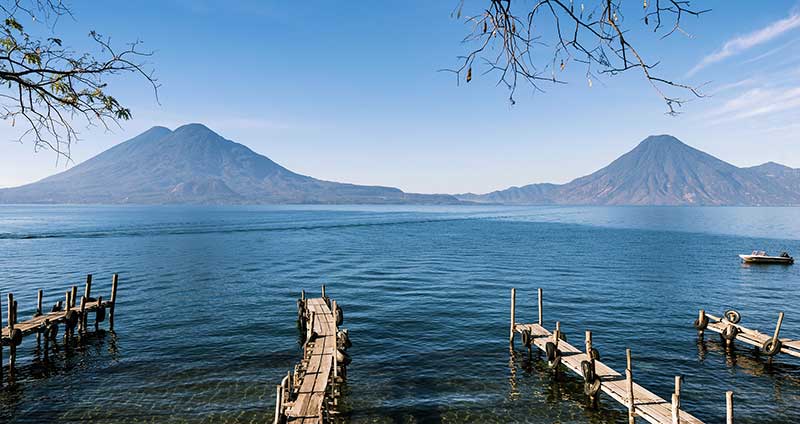

Quetzaltenango
It is the most important city of the Maya Highlands region and the second city in Guatemala after the capital. The city is situated in a wide valley surrounded by mountains and volcanoes. All around, you can find coffee plantations which have built the richness of the city. The must-see of the city are the Public Theatre, an outstanding neoclassical style model, Espiritu Santo Church (Saint Spirit), with its splendid baroque frontage, and the Casa de la Cultura (Culture House), neoclassical style.
Quetzaltenango is the departure place of many journeys in the surroundings:
- San Andrés Xekul Village, and its famous church lavishly colored in the Toronicapan region, at only few kilometers away from Quetzaltenango.
- Salcala village hosts the remains of the first church in Central America.
- Volcanoes among others: Tajumulco, highest place of whole Central America at 4220, Santiaguito, remains active! Chicabal has a lagoon in his crater, considered by the Mayas as sacred; Lacandon; Santa Maria,…..
- Coffee plantations
- Prairies crossed by rivers
- Many thermal spring waters due to the volcanic activity.
Huehuetenango
This city is located north of Quetzaltenango in the middle of steeply mountains with impressive landscapes that can be discovered horseback riding or hiking. Traditional Mayan communities can be found everywhere!
To be discovered:
- Zaculeu archaeological site, an ancient Mayan fortress city.
- Juan Dieguez Olaverri mirador where you can watch an incredible scenic view endlessly.
- Todos Santos Cuchumatan village: Maya village surrounded by mountains.
- From Todos Santos Cuchumatan, Mexico can be reached and appreciated going through natural treasures.

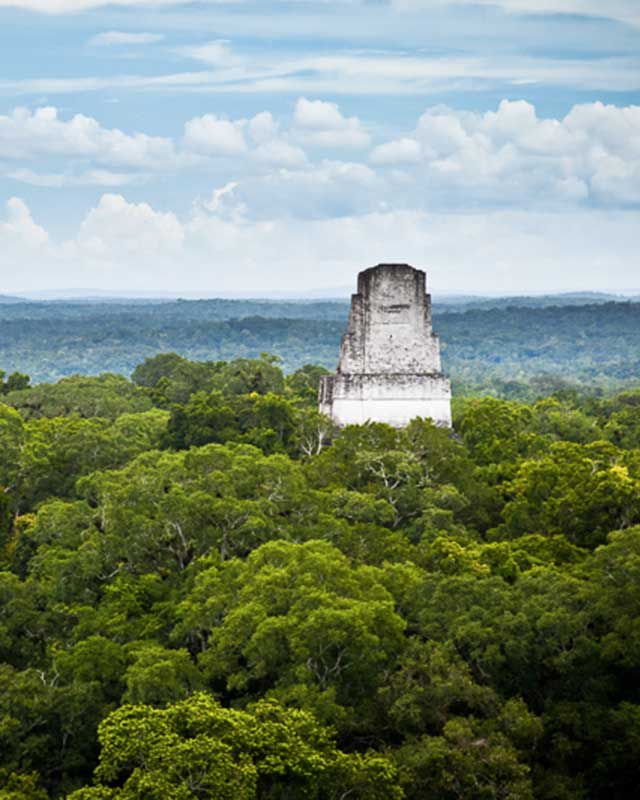
Petén REGION
Petén region is located in the North and neighbors with Mexico and Belize. It is a vast prairie covered by a lush jungle where heat and humidity prevail.
The region displays a remarkable biodiversity with many natural preserved areas.
The water in this region is a fullness display of lakes such as Petén Itza and two big rivers.
From the tropical forest, unrivaled Maya sites arise to start with Tikal, classified World Heritage Site, Yaxha, Piedras Negras, Uaxactun with a very interesting astronomical observatory. Dos Pilas, El Ceibal, Aguateca, San Bartolo and El Mirador where you can find the highest pyramid of Mayan World.
Besides its phenomenal archaeological heritage, the Petén is also the perfect place to watch the nature, to practice adventure tourism as well as ecotourism.
The Ixpanpajul Natural Park nearby Flores is a beautiful show.
Flores
Flores is the capital of Petén region
Can be accessed from Guatemala City either by road, or by domestic flight.
Flores has touristic infrastructures.
The old town Flores is located on an island called Isla de Flores and connected by a bridge.
From Petén going towards the Izabal region within an exuberant nature, Quirigua nestles the richest ancient Mayan city, classified World Heritage Site, famous for its memorial stones which are the biggest in the entire the Mayan world.
This site is close to Honduras’s border.
There is nothing to do but to cross this border to discover Copan’s Mayan site in Honduras, designated World Heritage Site. The architecture and the engraving of this city embody the classical Mayan period beautifully.


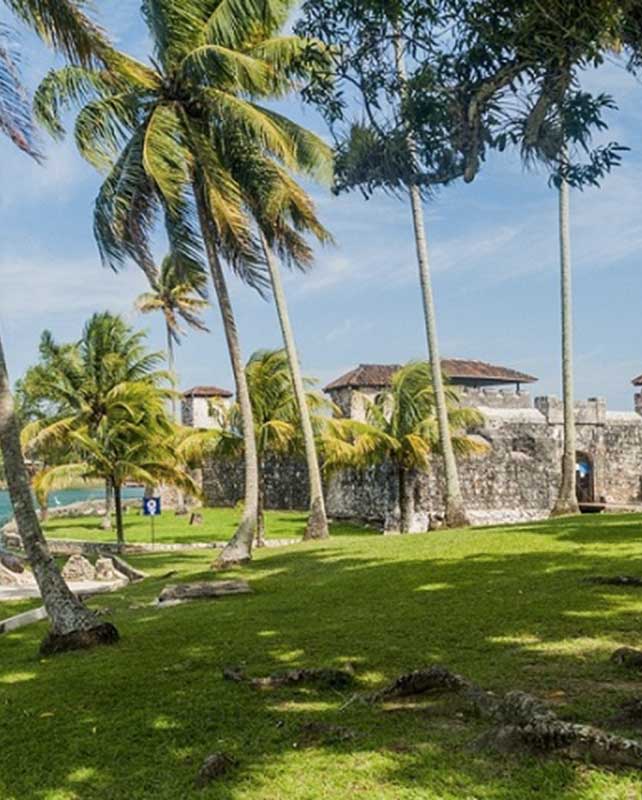
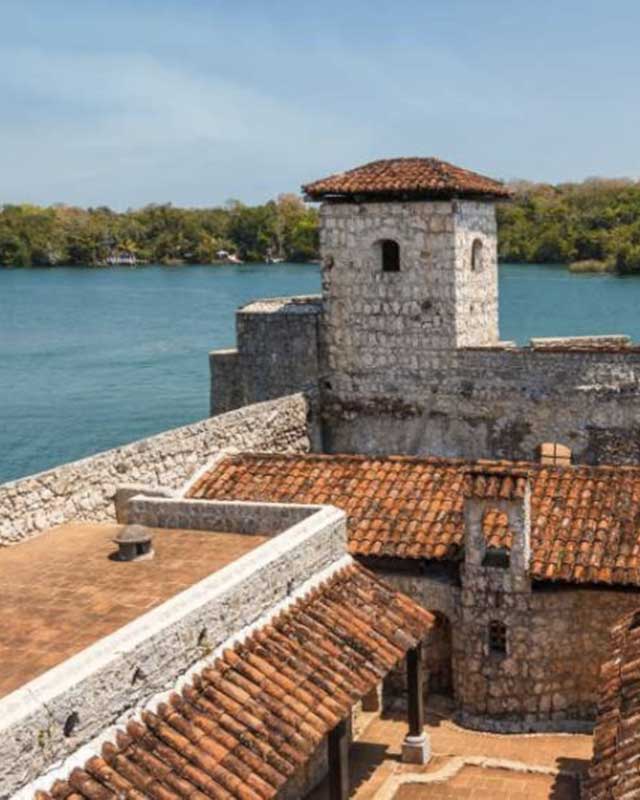
Izabal REGION
Located near the Caribbean, Izabal region, in the mountains of the center, mainly the Verapaces region and in the Eastern region. The region neighbors Petén and Belize on the North and the East border with Honduras. It is touched by the Caribbean sea. It presents an opulent nature with many natural preserved areas and everywhere you can feel the Caribbean essence.
As previously mentioned, it is in this background that the archaeological site Quirigua classified World Heritage Site is located.
Puerto Barrios : Capital of Izabal region. Ancient banana harbor that is still very lively, with the Caribbean essence.
Livingston : Caribbean Seaside city, can be reached by coastal way from Puerto Barrios. Strong presence of Garifunas, African slaves’ descendants bring spice to the city.
Rio Dulce : River connecting Izabal Lake to the Caribbean sea. Boat trip on the river between Livingston and the small town Rio Dulce, 30 kilometers of delight!
Izabal Lake : It is the biggest lake in Guatemala. Nestled in greenery and surrounded by very nice beaches, it hosts landscapes of all beauty. Among all to be highlighted:
- San Felipe Castle (San Felipe Fort), built during the 17th and 18th century to fight against pirate ships that overrun the coast, the castle is located at the junction of Rio Dulce and Izabal Lake.
- Bocas de Polochic Natural Park, natural preserved area at the mouth of the Rio Polochic which flows into Izabal Lake.
- Finca El Paraiso, a small paradise located on the banks of the lake with natural water pools and heated waterfalls.
Verapaces REGION
Located at the center of Guatemala, the region introduces many opportunities for adventure tourism with abundance of natural wonders such as: waterfalls, gorges, valleys, natural water pools, caves, forests with an extremely diverse fauna and flora. The emblematic bird the Quetzal can be found there, this bird had a tremendous value to the ancient Mayas due to the beauty of its feathers.
Cobán : City built in the 16th century, it is the departure place for many journeys. There is an amazing view of the city from the Calvary Church (Iglesia del Calvario) built on a hill.
Languin Caves and de la Candelaria Caves : The best known in the region. Genuinely impressive.
Semuc Champey : A must-see near Languin: a superb set of waterfalls and ponds with spectacular blue and green colors and a spectacular natural stone bridge.
Sepalau Lagoons : Located at only 8 kilometers away from Chisec village (east of Chisec), there are four splendid emerald lagoons nestled in the forest.
Rio Cahabon : A wonderful spot for nature lovers. For those who wish to go rafting, you need to go to the place where Rio Languin meets Rio Cahabon.
Lachuá Lagoon : Situated surrounded by jungle, west side of the small town of Chisec, not to be missed if you still have time to visit.
El Quetzal Biotope : Protected area where a very rich flora and wildlife meet. This area has the name of an emblematic bird from Quetzal that you can surely glimpse!

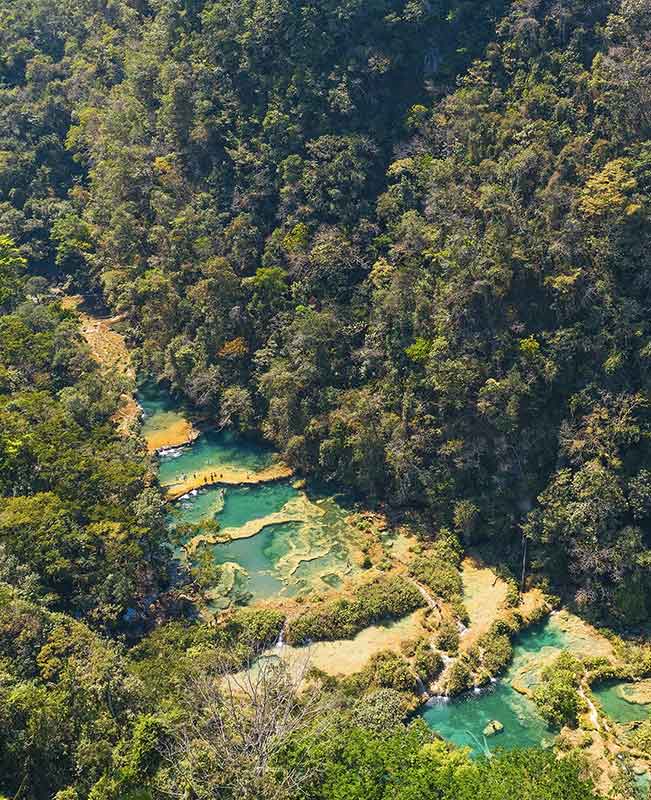
EASTERN REGION
De nombreux sites à découvrir
This side of Guatemala has several regions with many sites to be discovered.
Sierra de las Minas Biosphere protected area
The Biosphere is located in the heart of Sierra de las Minas, a range of mountains that covers several territories of Guatemala. It is covered by a superb forest that welcomes a very diverse wildlife including about twenty endemic species of birds. Where many different ecosystems can be watched.
Do not miss: Salto de Chilasco, a waterfall of 130 meters high!


Rio Hondo
Very pleasant stop next to Rio Motagua and where you can go to discover Sierra de la Minas, up north, and several other sites around.
Ipala lagoon and volcano
Located southern south-west of Rio Hondo. The lagoon is situated in the crater of the volcano. A place that inspires admiration.
Esquipulas
The city is mostly famous for the basilica sanctified to Cristo Negro (the Black Christ).
Urlanta Cataracts
There are perfect for all types of sports and outdoors adventures.


